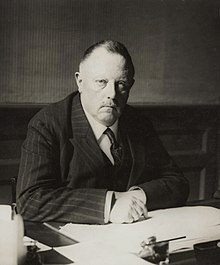|
Willem Hendrik Keesom
Willem Hendrik Keesom (/ˈkeɪsoʊm/[1][2]) (21 June 1876, Texel – 3 March 1956, Leiden) was a Dutch physicist who, in 1926, invented a method to freeze liquid helium. He also developed the first mathematical description of dipole–dipole interactions in 1921. Thus, dipole–dipole interactions are also known as Keesom interactions. He was previously a student of Heike Kamerlingh Onnes, who had discovered superconductivity (a feat for which Kamerlingh Onnes received the 1913 Nobel Prize in Physics). He also discovered the lambda point transition specific-heat maximum between Helium-I and Helium-II in 1930.[3] In 1924 he became member of the Royal Netherlands Academy of Arts and Sciences.[4] In 1966, the minor planet 9686 Keesom was named after him. See alsoReferences
External links
|
||||||||||||||||
